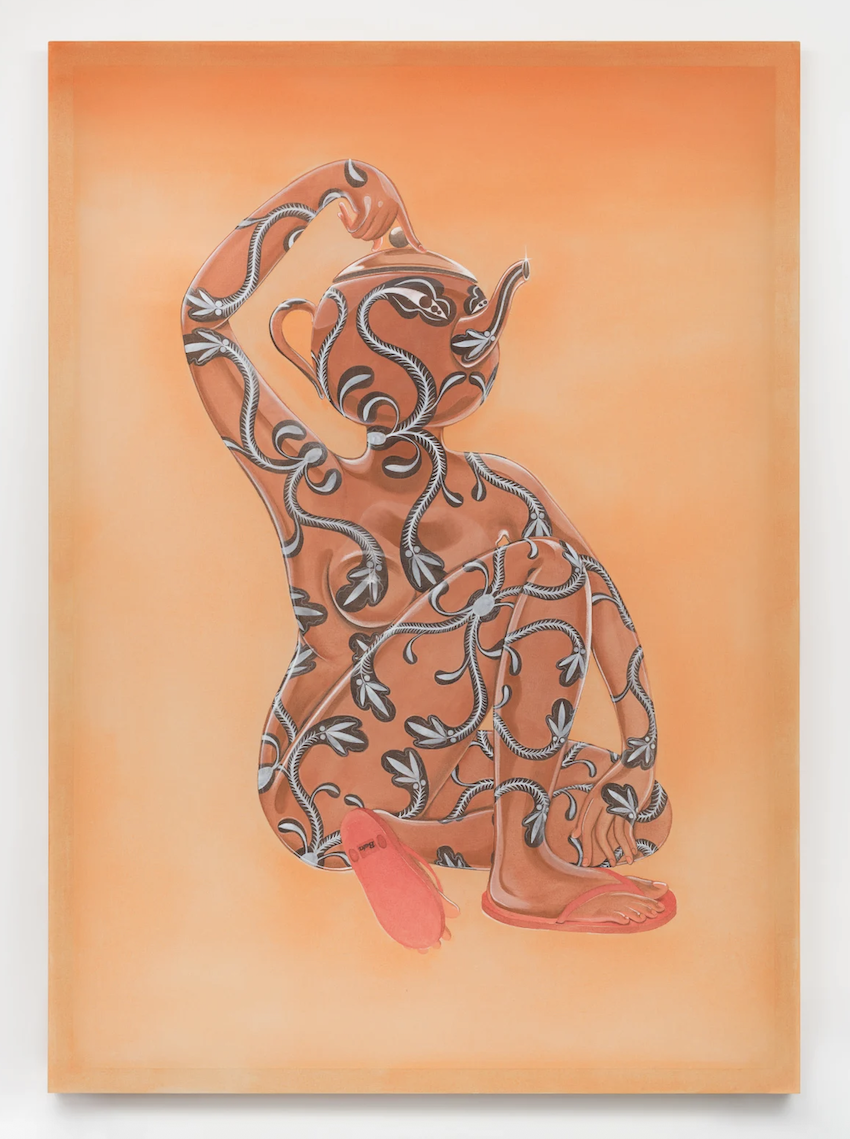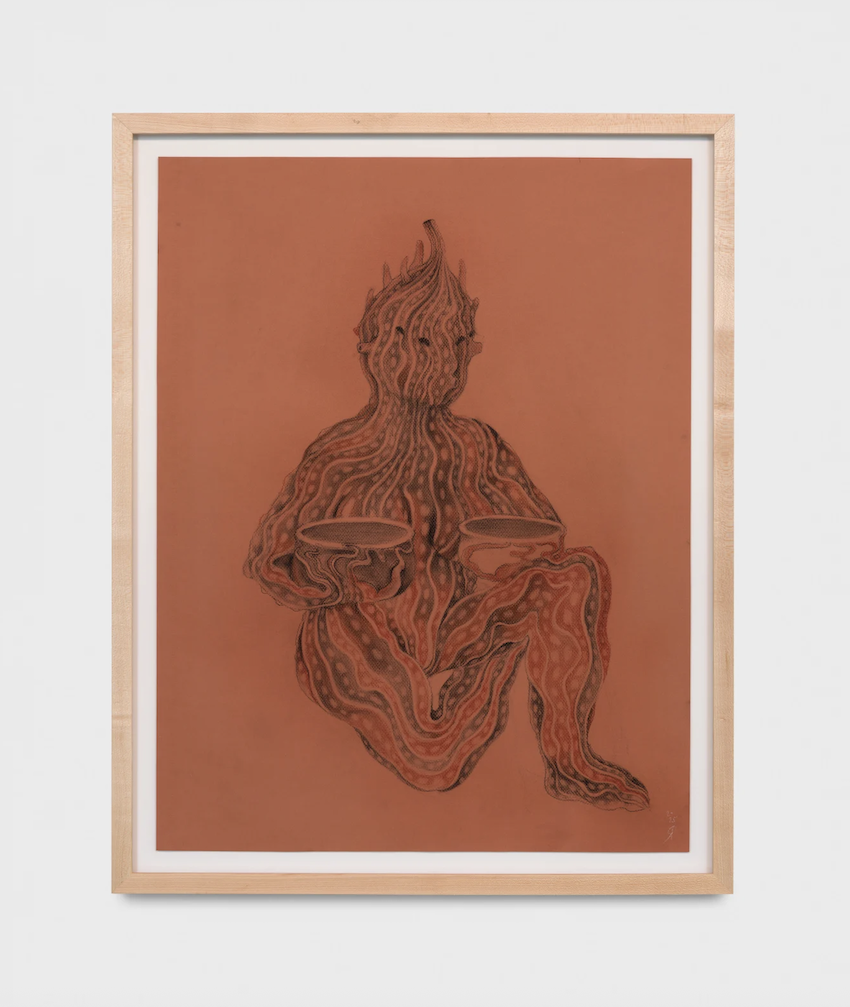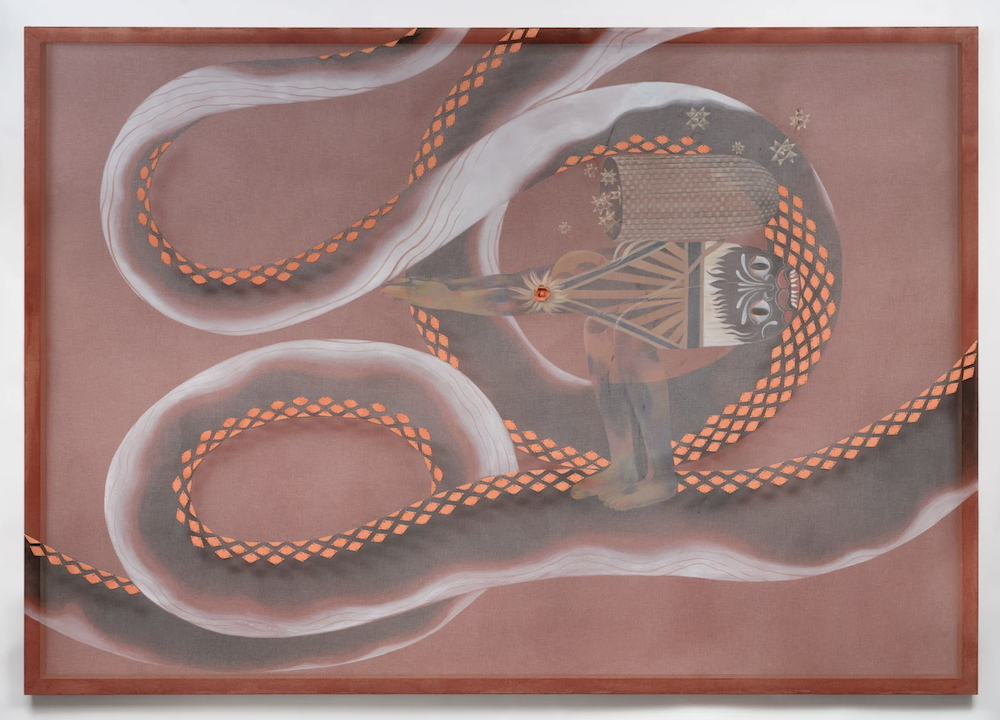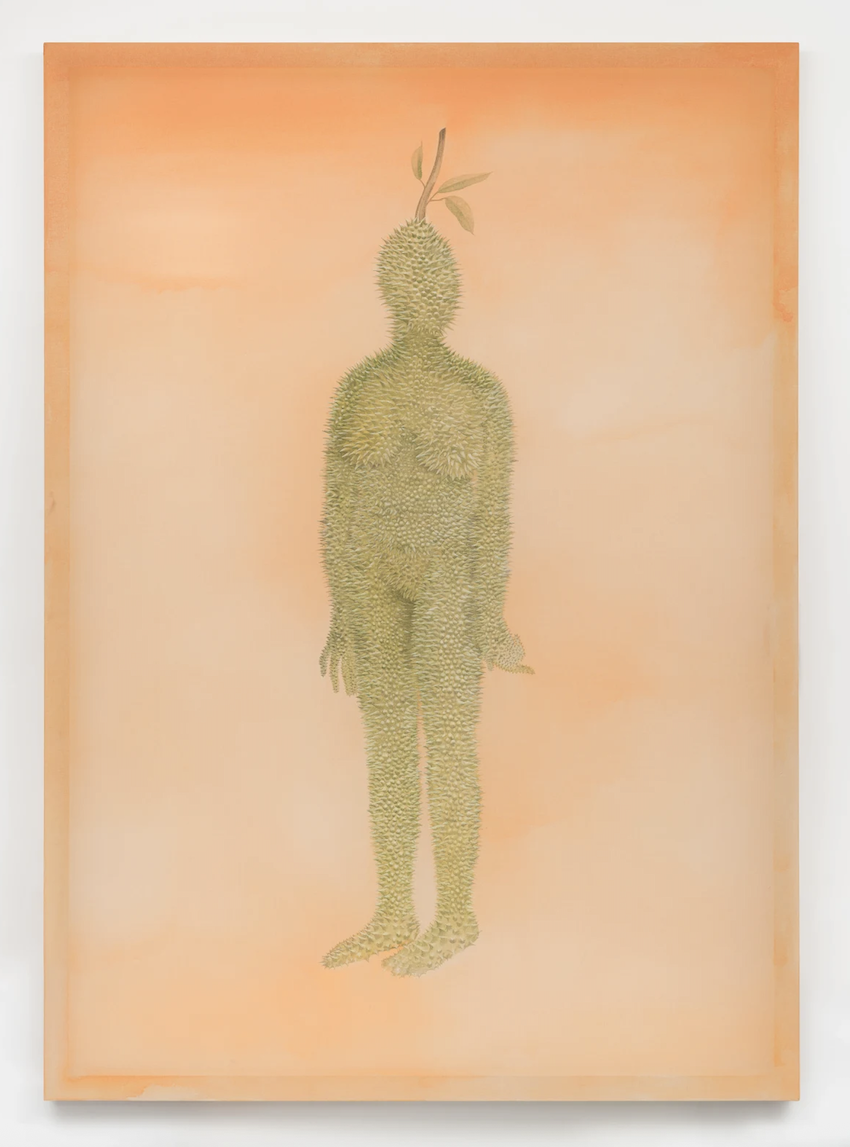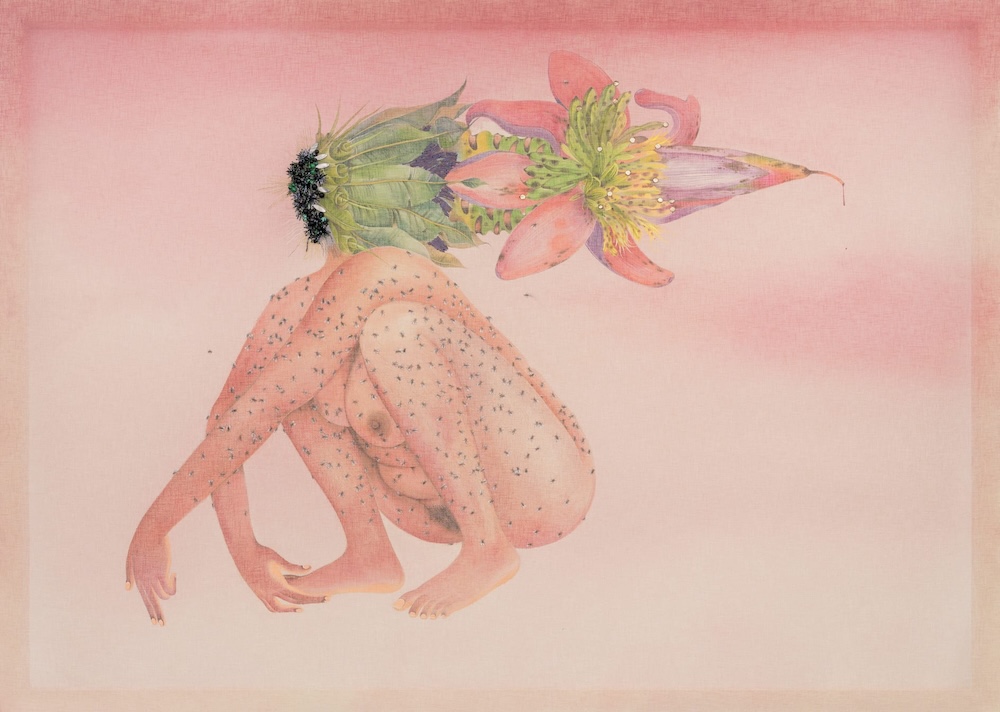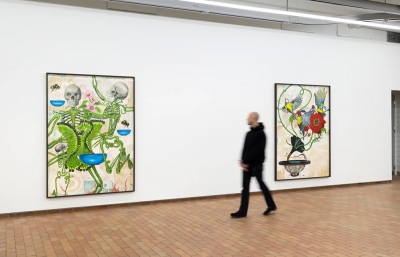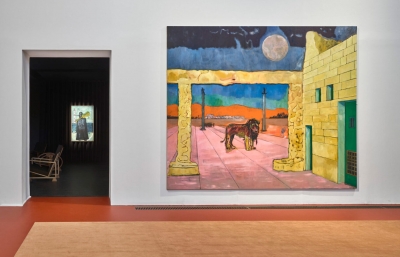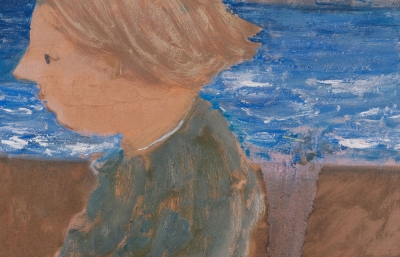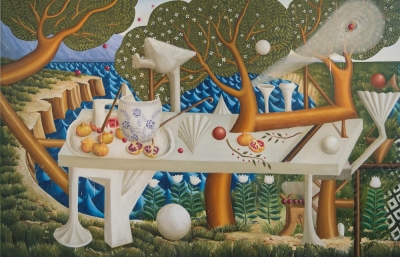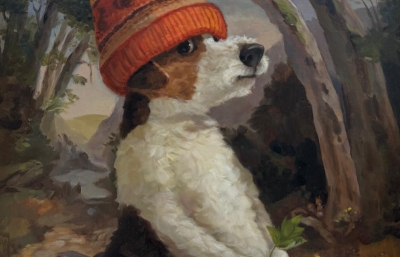Rajiv Menon Contemporary is pleased to announce දුම් ලෝකය (Dhum Lōkaya), a solo exhibition of recent works by Toronto based artist Rajni Perera. This will be the artist’s first solo exhibition in the United States, following numerous institutional exhibitions in Canada and throughout the globe. In a multi-disciplinary practice that spans drawing, painting, sculpture, and installation, Perera works between traditional artisanal methods and constructive critical discourse to produce works that challenge antiquated, oppressive ideologies and envision new future horizons.
This new body of work expands upon a complex mythology that the artist has developed over the course of her career. For over two decades, Perera has investigated the myths and foundational stories upon which our personal identities, social structures, and shared ideologies are built. Her work culls imagery and tropes from diverse source material, from global historical epic and mythology to 1980’s American Sci-Fi Action films. She weaves past and present, fiction and fact, into complex narrative structures that raise poignant questions about the critical role of myth in structuring our contemporary landscape. Often surreal, uncanny, and rigorously made, her work speaks to the power of speculative fiction to reveal, much like science fiction itself, hidden truths that realism cannot. In her drawings and paintings, monsters, animals, feminine figures, and strange hybrids populate chimaeric dream worlds where the known and unknown commingle.
Futurity, femininity, migration, and globalization are recurring themes throughout her work, which centers the feminine body as both a map of our contemporary landscape and a site of resistance. Four new corporeal sculptures ask us to reflect upon what burdens that body is tasked to carry and the weight of responsibility it is expected to hold.
The gallery teems with animal, botanical, and elemental forms, drawing viewers into a vibrant ecosystem that appears both imagined and remembered. Perera conjures a world animated by forces that modern frameworks seek to contain or disavow: magic, monstrosity, mutation, myth. Taken together, her works offer a new cosmology where plants, animals, and landscapes are charged with renewed agency and symbolic weight. She calls upon myth not simply as a fantasy or escape, but as a critical technology of human understanding. Thus, myth becomes a counter-tool: one that can dismantle dominant ideologies as effectively as it once built them. She asks: what happens if we reimagine these old stories through a contemporary, feminist, decolonial lens? Can we write new ones that hold space for multiplicity, complexity, and resistance?
Perera invites us to step into a charged, mythic ecology—one where the feminine body is both burdened and defiant, where animals speak in symbols, and where the natural world is neither resource nor backdrop, but protagonist. Through this reframing, she calls on us to reflect on what must be mourned, what must be rewritten, and what might still be possible.

